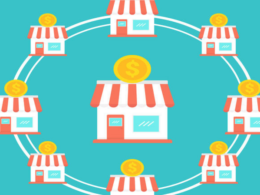Leave it to the cheeky Brits at Virgin Mobile to set up a Web site devoted to an emerging workplace hazard and call it PractiseSafeText. As billions of text messages are typed and sent each year on both sides of the Atlantic and around the world, they appear to be taking an unexpected toll.
Remember carpal tunnel syndrome and how it seemed to strike keyboard users and meat-hangers like an epidemic in the ’90s? Now the 21st century has spawned its own repetitive-motion workplace hazard, and it’s hitting us right in a place that separates us from most other creatures – our handy, multi-purpose opposable thumbs.
First, Give It a Cool Name
The American Physical Therapy Association calls it “Blackberry Thumb,” a malady causing pain, swelling or numbness of the thumb from texting on those wee buttons. Physical therapist Margot Miller, president of APTA’s Occupational Health Special Interest Group, says the condition is a repetitive-stress injury caused by performing the same motion for long periods of time.
“The devices are wonderful for short use, but PDAs are being used for everything – phone, addresses, searching the Web and e-mail,” Miller says. “That leads to continual abuse on the joint. At first it’s irritated, then there’s swelling and soreness, and it could lead to tendonitis.”
Miller’s advice is to use PDAs when you have to, but if you’re at a computer, stick to the full-size keyboard. There’s a reason thumbs are only used for spacing – they’re not all that dexterous.
Teach Your Workers Well
Although she knows of no work loss issues yet associated with Blackberry Thumb, Miller says that doesn’t mean there won’t be: “If employers are supplying PDAs, then it’s also their responsibility to educate the workforce so it doesn’t become a problem.”
The APTA offers five simple exercises that can help stretch and relax the muscles and help with circulation, all which will stave off injury. But the main advice if you have to use PDAs is to just stop, take a break and do some stretches.
‘Trigger Finger’ and the Tunnel
Of course, the computer age has already produced its share of other injuries, severe enough at times to require physical and occupational therapy. “Trigger finger,” characterized by a popping or stiffness in the fingers, and De Quervain’s tenosynovitis, which can afflict the wrist and hand until an immobilizing brace or surgery is needed, are both repetitive-stress injuries.
As for carpal tunnel, today both employers and employees are savvy about ergonomics and the need to organize a workplace for postural comfort to reduce injuries. But they don’t always do it, and some pay a painful price.
Musculoskeletal disorders accounted for a third of all workplace injuries reported in 2005, according to the U.S. Bureau of Labor Statistics. And repetitive-stress injuries alone result in an average of 19 lost workdays for an employee.
Taking it in the Neck
The latest report from the American Chiropractic Association, which will come as no great revelation, is that heavy handbags can cause neck and shoulder pain, and possibly long-term damage to spinal cord soft tissue.
Between laptops, manuals, water bottles and such, both men and women today bear a heavy burden. Miller advises using a wheeled cart if you have to lug things a distance. “The whole idea is to stop stressing the body when you don’t need to,” she says.
Come Again?
The American Speech-Language Hearing Association reports that not only can audio earbuds and wireless headsets hurt your hearing, they can damage the ear’s sensitive hair cells.
Spokesperson Doug Plesh says ASHA studied several devices and found that the tiop volume on some exceeded the maximum safe level of 85 decibels. “They have the potential to hurt your hearing,” he says.
ASHA recommends listening at low volume and taking regular breaks – hearing damage results from long, repeated exposure to too much sound.
The Eyes Have It
As more of us stare at computer monitors for longer parts of the day, it’s reasonable to think that eye injury is a big problem.
But according to the American Academy of Ophthalmology, there’s no scientific evidence that video display terminals damage your eyes. That may be the case, yet anyone who spends a lot of time at a terminal can tell you about the blurry vision, eye strain, dry eyes, headaches and fatigue that sets in.
The AAO offers these suggestions to reduce those symptoms:
- Be sure your screen is positioned at eye level.
- Sit about 25 inches from the monitor, instead of nose-to-screen.
- Reduce screen glare by dimming surrounding light.
- When transcribing a document, move it closer to the screen to reduce the distance your eyes have to travel.
- Keep your VDT clean and in proper focus.
But the AAO’s top advice for reducing eye problems when transfixed by the monitor comes down to one word: Blink.
Try it right now.
And again.
Feels good, doesn’t it? Now add a few finger stretches, some neck curls and, for hearing’s sake, turn down your buds, bud.
Alice Rhein is a contributing writer for StartupNation.






